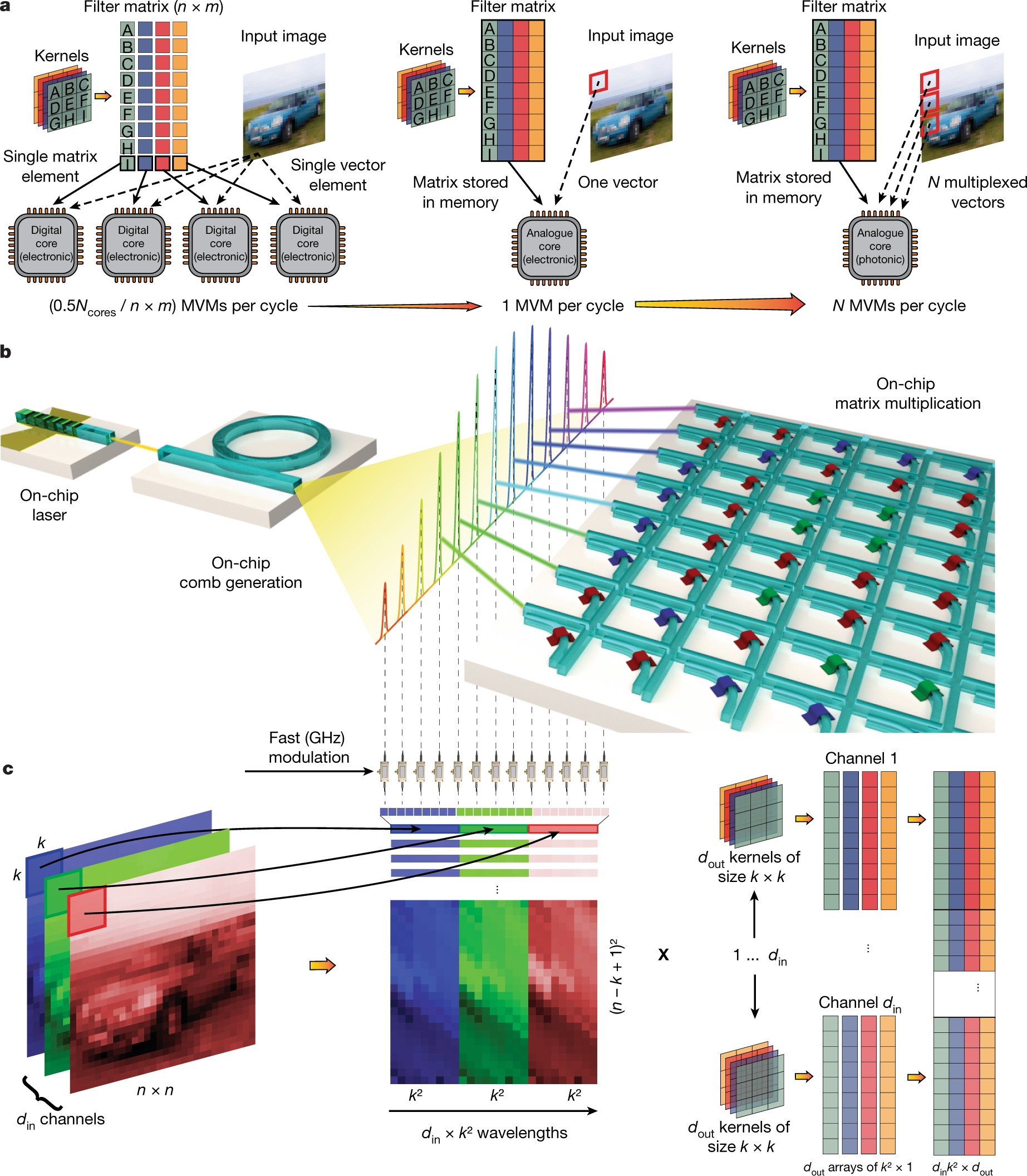MY 100-Day English -50
The explosive growth of artificial intelligence calls for rapidly increasing computing power. Two reported photonic (光子晶体) processors could meet these power requirements and revolutionize artificial-intelligence hardware.

Continuous
Feldmann and colleagues independently made an integrated photonic processor that performs a convolution involving optical signals that span two dimensions. The device uses optical frequency combs in an ‘in-memory (内存)’ computing architecture that is based on a phase-change material (a material that can switch between an amorphous (无定型的,非晶质的) phase and a crystalline (结晶的) phase). The authors fully parallelized the input data through wavelength multiplexing and conducted analogue (类似物) matrix–vector multiplication using an array of integrated cells of the phase-change material.
Such a highly parallelized framework can potentially process an entire image in a single step and at high speed. Moreover, in principle, the system can be substantially scaled up using commercial manufacturing procedures and aid in situ machine learning in the near future. Because the convolution process involves passive transmission, the calculations of the photonic processing core can, in theory, be performed at the speed of light and with low power consumption. This ability would be extremely valuable for energy-intensive (能源密集型的) applications, such as cloud computing.
Given the challenges facing conventional electronic computing approaches, it is exciting to see the emergence of integrated photonics as a potential successor (继承者) to achieve unprecedented (空前的;无前例的) performance for future computing architectures. However, building a practical optical computer will require extensive interdisciplinary (跨学科的,跨领域的) efforts and collaborations between researchers in materials science, photonics, electronics and so on. Although the reported photonic processors have high computing power per unit area and potential scalability (可扩展性), the all-optical computing scale (the number of optical artificial neurons) remains small. Moreover, the energy efficiency is limited by the presence of computing elements that inherently (内在的,固有的) absorb light and because electrical and optical signals frequently need to be interconverted (互换).
Another avenue (途径,手段,林荫大道) of research is the development of advanced nonlinear integrated photonic computing architectures, rather than one- or two-dimensional linear convolutions (一维或者二维的线性卷积). By integrating electronic circuits and thousands or millions of photonic processors into a suitable architecture, a hybrid optical–electronic framework that takes advantage of both photonic and electronic processors could revolutionize AI hardware in the near future. Such hardware would have important applications in areas such as communication, data-centre operation and cloud computing.
See you tomorrow









